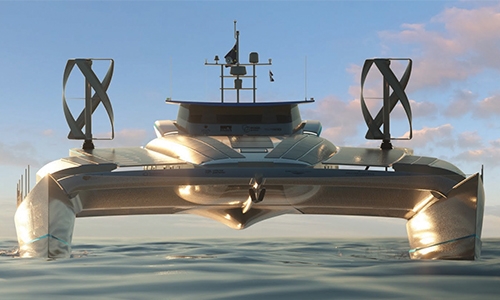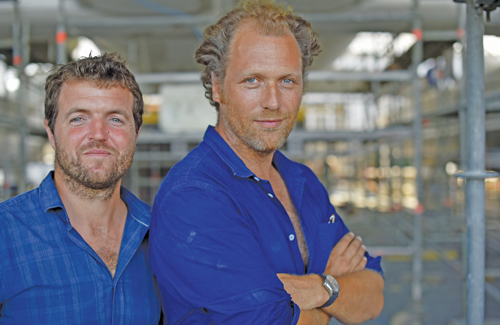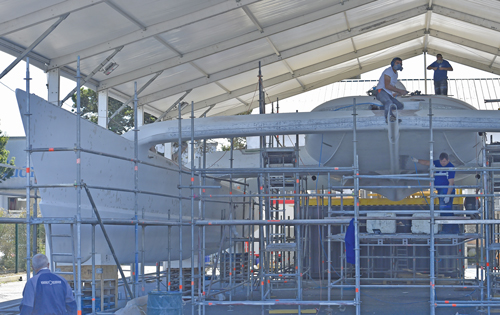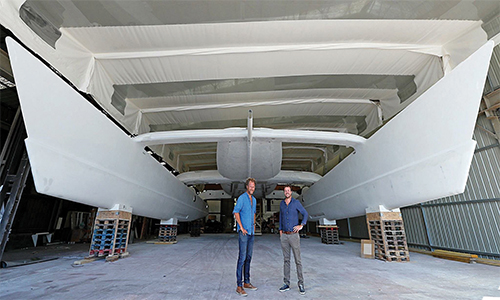Solar Impulse of the Seas
Saint-Malo : Dubbed the “Solar Impulse of the Seas,” the first boat to be powered solely by renewable energies and hydrogen hopes to make its own historic trip around the world.
A water-borne answer to the Solar Impulse -- the plane that completed its round-the-globe trip using only solar energy in July -- the Energy Observer will be powered by the Sun, the wind and self-generated hydrogen when it sets sail in February as
scheduled.
The multi-hulled catamaran is in a shipyard at Saint-Malo on France’s west coast, awaiting the installation of solar panels, wind turbines and electrolysis equipment, which breaks down water to produce its component elements, hydrogen and oxygen.
“We are going to be the first boat with an autonomous means of producing hydrogen,” says Frenchman Victorien Erussard, who is behind the project -- confidential until now -- with compatriot Jacques Delafosse, a documentary filmmaker and professional scuba
diver.
Sun, wind, hydrogen
The plan is for the boat’s batteries, which will feed the electric motors, to be powered in good weather by solar and wind energy, explains the 37-year-old merchant navy officer with a smile.
“If there’s no Sun or wind, or if it’s night, stored hydrogen -- generated by electrolysis powered by the solar panels and two wind turbines -- will take over,” he says.
As a result, the vessel’s trip will not use any carbon-emitting fossil fuels, as is the case for 96 percent of boats today.
The vessel itself has a storied past.
The catamaran won the Jules Verne trophy, for a team sailing non-stop round the world, in 1994. It was bought for 500,000 euros ($562,000) and extended by a whopping six metres, to 30.5 metres (100 feet), for the project.
‘Great challenge’
The Energy Observer was designed in partnership with a team of naval architects and the CEA-Liten research institute in the French city of Grenoble, which is dedicated to renewable energy technologies.
At a total cost of 4.2 million euros ($4.72 million), the green energy boat will be fitted with sensors to act as veritable moving laboratory for CEA-Liten, whose director Florence Lambert describes the project as a “great challenge” to take on.
The head of the project at CEA-Liten, Didier Bouix, adds that hydrogen can store “20 times more energy” than conventional batteries.
Six-year world tour
Energy Observer’s world tour is expected to take six years. After a careful crossing of the Mediterranean, the catamaran will venture out into the Atlantic and then Pacific oceans.
In all, 101 stopovers are planned from Cuba to New Caledonia to Goa on India’s west coast.
There are still hurdles to overcome, not least in funding: the Energy Observer’s trip is expected to cost a minimum of four million euros a year, notably to develop a travelling exhibition.
But the team says it is confident of getting the funds.
And once again it finds inspiration from its airplane mentor Solar Impulse -- which flew around the world on renewable energy and accomplished “what everyone said was impossible,” said Delafosse.
French skipper Victorien Erussard (L) and movie maker Jerome Delafosse pose for a photograph in Saint-Malo, western France
Men work on the hull of “Energy Observer”
Green-powered boat readies for round-the-world voyage
Related Posts




